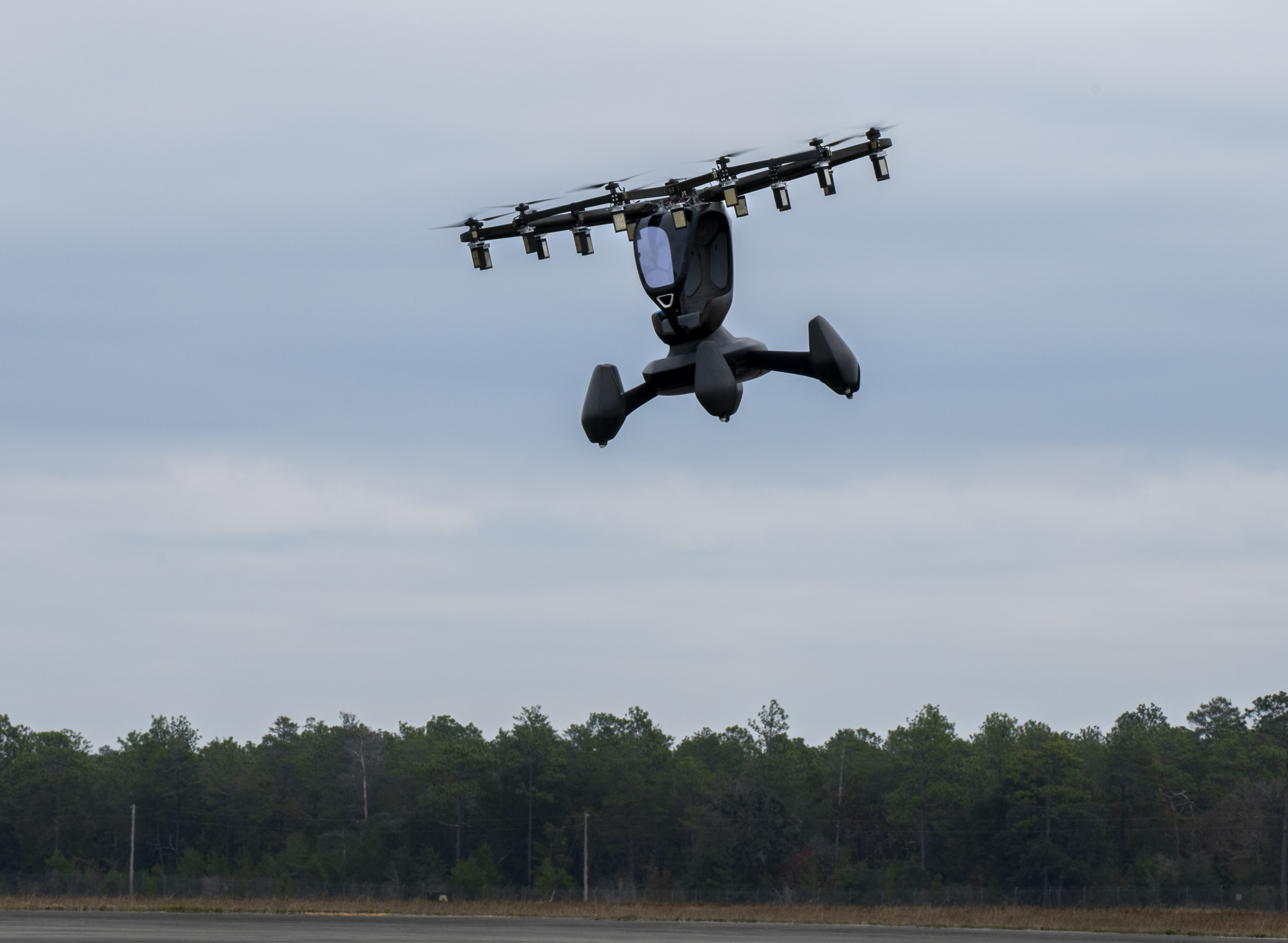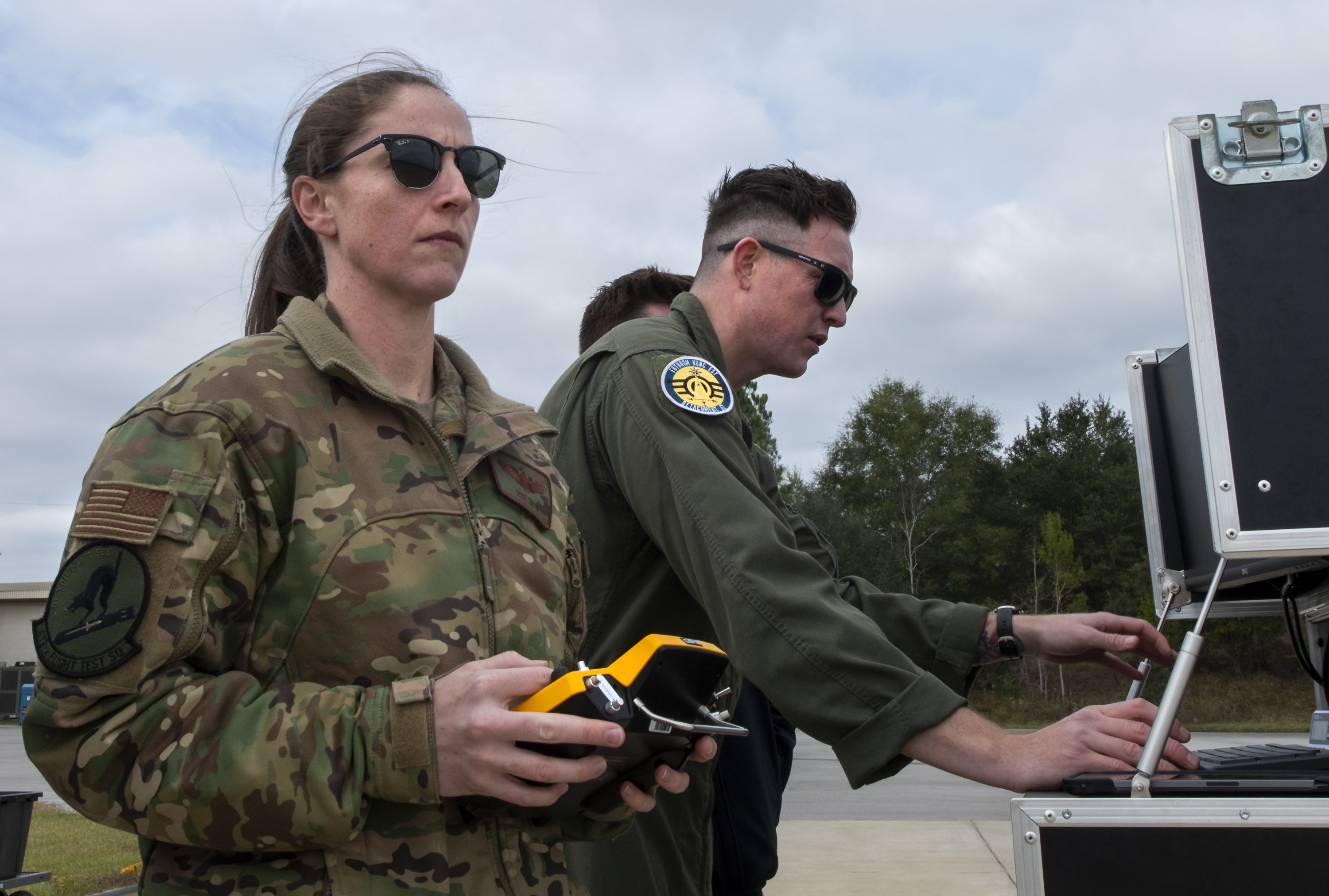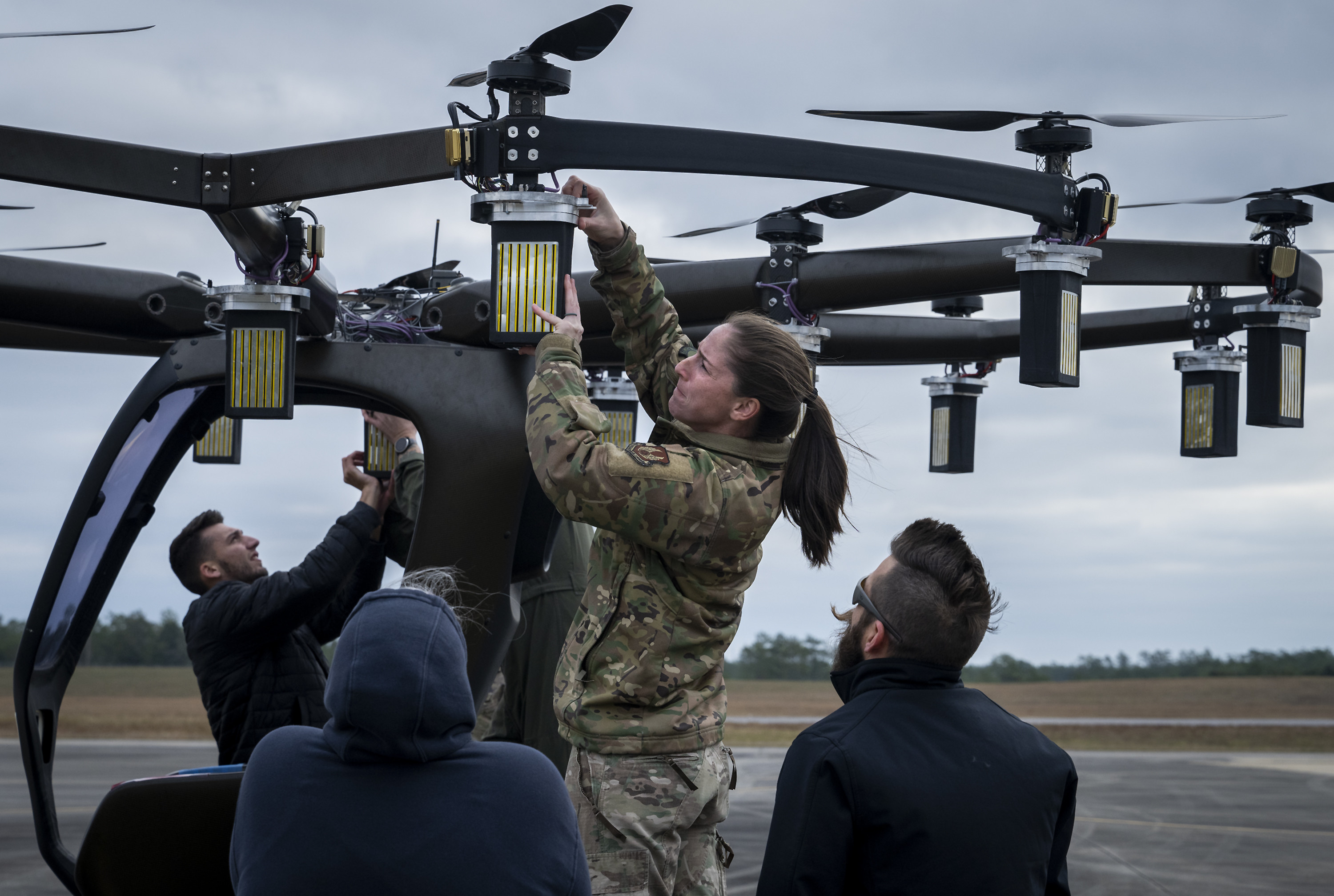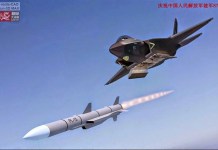The US Air Force (USAF) is training to fly an electric ‘flying car,’ called the HEXA electric vertical takeoff and landing (eVTOL) aircraft, as part of the service’s ambitious Agility Prime program.
On November 16, the Lift HEXA eVTOL lifted off at Duke Field for its first flight piloted by the USAF Airmen, who remotely controlled the aircraft during multiple takeoffs, flights, and landings.
The USAF said in a statement that this was an early step in creating a training program to incorporate airmen into the aircraft’s flight operation.
The training’s objective was twofold. First, to validate the HEXA’s training program by having the airmen execute it in a controlled test environment, and second, to serve as a proof of concept for developing responsive training for government operators on uncrewed eVTOL aircraft.

Participants included personnel from the 413th Flight Test Squadron, AETC Det 62, and AFWERX Agility Prime.
Agility Prime is an ambitious USAF program that seeks a highly modular eVTOL for various purposes, such as logistics and evacuation. AFWERX is a Technology Directorate of the US Air Force Research Laboratory (AFRL).
“Successfully completing this training is a huge milestone and confidence boost to allow us to meet this challenge,” said Maj. Riley Livermore, 413th FLTS Futures Flight commander.

During the two-week familiarization, the team began with classroom and simulator training before getting behind the controls of the HEXA aircraft.
The flight requires a two-person team. One person controls the movement of the aircraft, while the other monitors the aircraft systems, batteries, outside variables, etc.
The USAF aims to deploy its first eVTOL for ferrying passengers or freight by 2023, for which the service has dedicated $3.6 million to Agility Prime’s first procurement funds to lease ten eVTOL aircraft for exploratory use during fiscal 2023.
So far, the program has 66 potential uses, including infiltrating and exfiltrating special operations forces (SOF) and rescuing downed aviators or other personnel from behind enemy lines, which could be a dangerous mission for traditional choppers.
Agility Prime’s first real-world uses would probably involve supporting test and training ranges and other cargo transportation tasks. However, it could eventually play a role in wars.
HEXA Aircraft is among the first eVTOL aircraft that the USAF could acquire. Developed by Lift Aircraft, an eVTOL company based in Austin, Texas, HEXA is a single-seat multicopter weighing around 195 kilograms.

It is propelled by 18 rotors, capable of flying up to around 24 kilometers, and carries a maximum of 136 kilograms.
HEXA can be used for search and rescue, hauling small loads around bases, and emergency response. It appeared in this year’s edition of the Emerald Warrior exercise at Hurlburt Field, Florida.
According to founder and CEO Matt Chasen, lift Aircraft is expecting some form of procurement contract from the USAF in 2023.
eVTOLs For USAF’s Agile Combat Employment Concept
The USAF is particularly interested in how eVTOLs could help the service rapidly set up bases in a conflict zone as part of its Agile Combat Employment (ACE) concept.
ACE is an operational concept developed to meet the increasing challenge of anti-access/area denial (A2/AD) capabilities fielded by near-peer adversaries like China and Russia.
ACE involves leveraging networks of well-established and austere air bases, multi-capable airmen, pre-positioned equipment, and airlift to rapidly deploy, disperse and maneuver combat capability throughout a conflict zone.
:quality(70)/cloudfront-us-east-1.images.arcpublishing.com/mco/KXVMJTVS3ZFY5HJXIPH25DTYBQ.jpg)
Overseas US bases are vulnerable to the threat of thousands of ballistic and cruise missiles from China and Russia. For instance, China can strike the US military facilities located in the first and second island chains of the Western Pacific.
“Moving parts in a base around quickly, sometimes it might require a transformative vertical lift because those airfields that need to be moved may be significantly damaged,” Tekell said in an interview earlier this year. They “may not have runways anymore. They may not have roads anymore,” he continued.
While in the past, the USAF may have used legacy platforms like helicopters or tiltrotor aircraft to move equipment or supplies around when roads or other infrastructure were unusable.
However, Agility Prime’s eVTOLs can perform these tasks more straightforwardly and fuel-efficiently in the future. Also, it would be much more economical than a traditional helicopter in procurement, operations, and maintenance.
The ongoing Ukraine war has highlighted the importance of ACE, where Ukraine’s Air Force has been able to keep the Ukrainian airspace contested, despite being outnumbered by the Russian Air Force.
Russia boasts massive ballistic and cruise missiles that can strike any part of the world. Recognizing this threat, the Ukrainian fighter pilots adopted flexible tactics like keeping the aircraft moving from one airfield to another and flying difficult flight paths to reduce the chance of the enemy catching them on the ground.
Agility Prime Aims To Prevent China From Controlling eVTOL Supply Chain
Apart from ACE, the Agility Prime program aims to develop and accelerate the commercial market for advanced air mobility aircraft and create a domestic industry and supply chain to support their development and production.
It is an effort to prevent China from poaching away this emerging market from the US as it did with the consumer drone market, with most of the world’s drone supply chain moved to China.
In 2020, USAF’s then-assistant secretary for acquisition, Will Roper, admitted the failure of the Pentagon to take measures to seize the commercial drone market, leaving the US vulnerable to supply-chain risks.
“The Pentagon didn’t take a proactive stance on it, and now most of that supply chain has moved to China,” Roper had said to a group of reporters. “We probably could have kept part of the market here and not have the current security issues when someone wants to use a foreign-made drone at an air force or service event,” he said.
Therefore, the USAF is willing to consider any company that can reach the necessary technical and manufacturing requirements and looks at whether those aircraft’s capabilities would fulfill the variety of mission sets the USAF could need.
So, it will not be a single company that will get one Agility Prime contract since the USAF is interested in promoting the growth of the eVTOL industry and supply chain in the US.
Apart from Lift Aircraft, the USAF currently has contracts with 14 companies to produce full-scale aircraft that could be used for Agility Prime, which includes producers of piloted eVTOLs, like Joby Aviation and Beta Technologies, and startups developing cargo drones like Elroy Air and Talyn.
In March, two USAF pilots became the first airmen to fly an electric aircraft with military airworthiness when they took to the skies in Alia aircraft developed by Beta Technologies of Burlington, Vermont.

Alia aircraft can reach a range of 463 kilometers and a top speed of around 278 kilometers per hour. It can carry up to 566 kilograms of cargo.
Notably, Agility Prime has provided the companies funding, government testing resources, and the potential to earn revenue on military sales before the Federal Aviation Administration gives them the green light to launch civilian service.
For example, Northern California-based Joby Aviation has received contracts worth up to $75 million through Agility Prime for R&D and unmanned flight testing.
In November, the company told investors that it is in discussions with the USAF to deliver aircraft by 2024, as it disclosed the decision to push back its target date to launch urban air taxi services by a year to 2025 due to the slow pace of federal rule-writing that will govern the industry.
Joby’s four-passenger electric tiltrotor is designed to take off, land like a helicopter, and cruise on wings like an airplane as far as 241 kilometers.
- Contact the author at tanmaykadam700@gmail.com
- Follow EurAsian Times on Google News




